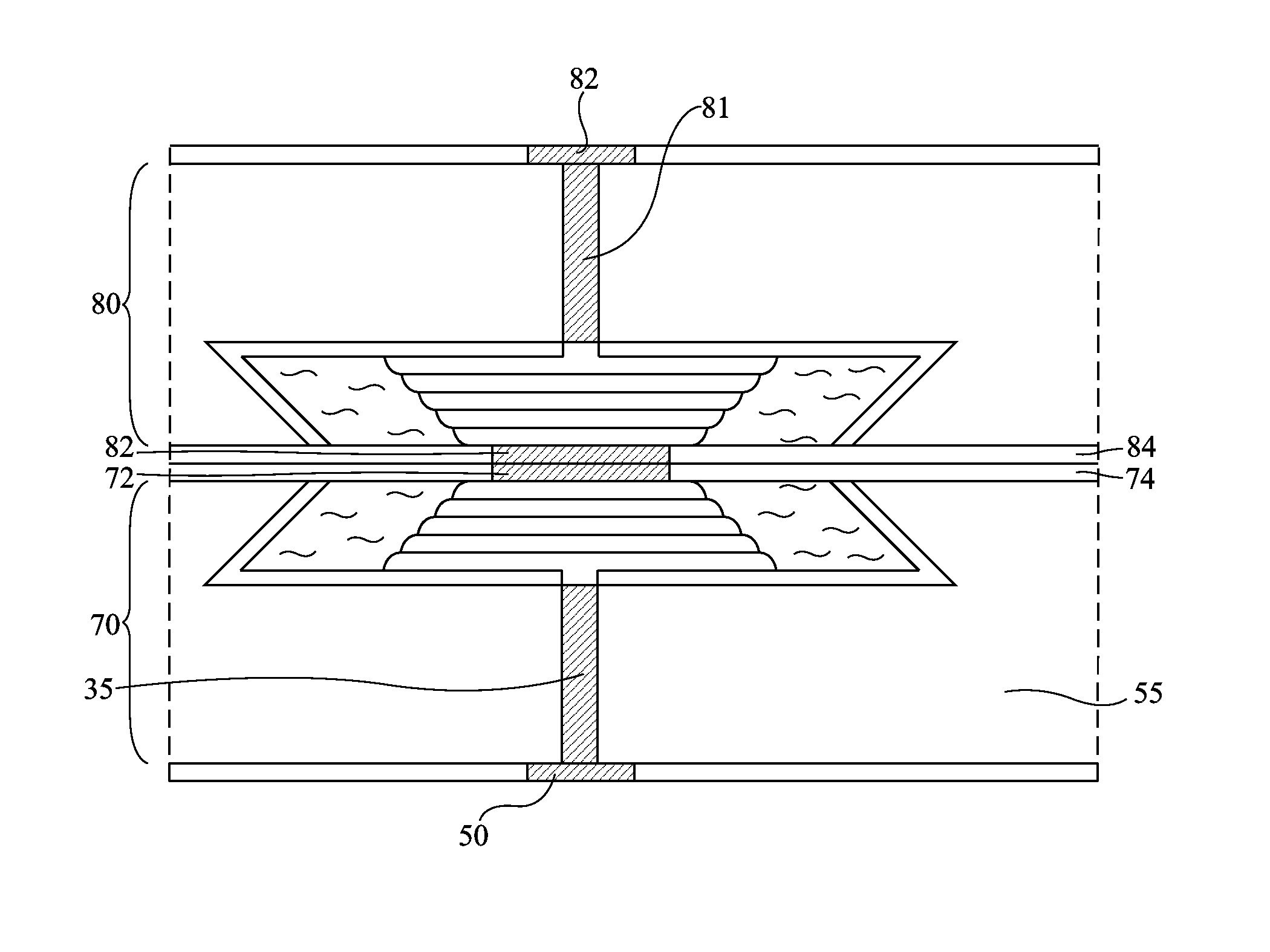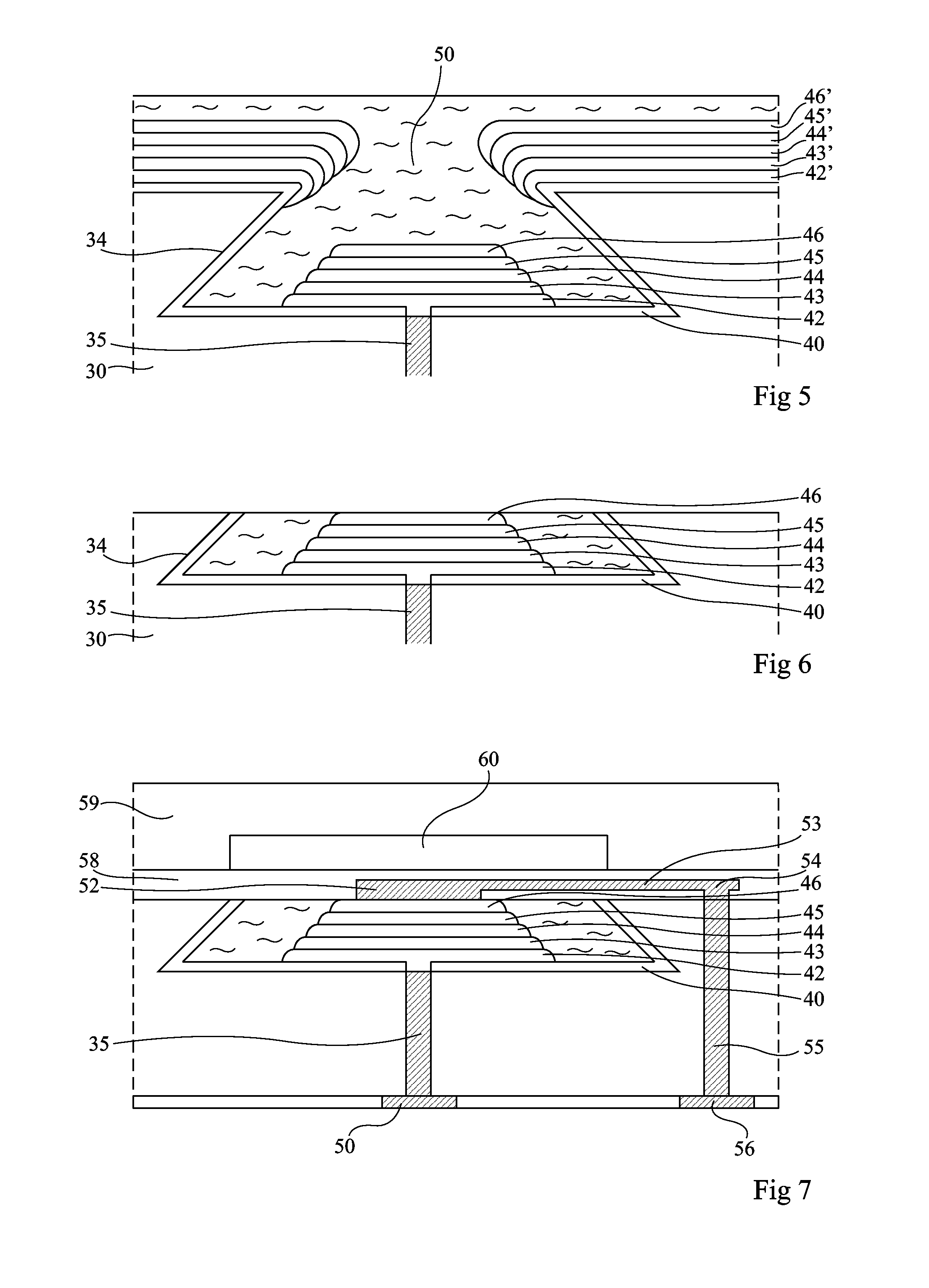Method for forming a lithium-ion type battery
- Summary
- Abstract
- Description
- Claims
- Application Information
AI Technical Summary
Benefits of technology
Problems solved by technology
Method used
Image
Examples
Embodiment Construction
[0039]FIGS. 2 to 6 illustrate results of successive steps of an embodiment of a method for forming a thin-film lithium-ion battery formed in a substrate 30. This method especially adapts to the case where a battery of small dimensions (with a side length ranging from 1 to 5 mm) is desired to be formed. It is then currently spoken of a micro-battery. The following description will be made in the specific case where the substrate is a silicon substrate, but any other substrate may be used, for example, a substrate made of an insulating material. The use of a silicon substrate however corresponds to a preferred embodiment since tried and tested techniques are known to saw, etch, and process such substrates. This further enables forming microelectronic components in the same substrate, on the same surface, or on a surface opposite to that on which the battery or batteries are formed.
[0040]In a first step illustrated in FIG. 2, a recess 32 with a re-entrant profile having an opening narr...
PUM
 Login to View More
Login to View More Abstract
Description
Claims
Application Information
 Login to View More
Login to View More - R&D
- Intellectual Property
- Life Sciences
- Materials
- Tech Scout
- Unparalleled Data Quality
- Higher Quality Content
- 60% Fewer Hallucinations
Browse by: Latest US Patents, China's latest patents, Technical Efficacy Thesaurus, Application Domain, Technology Topic, Popular Technical Reports.
© 2025 PatSnap. All rights reserved.Legal|Privacy policy|Modern Slavery Act Transparency Statement|Sitemap|About US| Contact US: help@patsnap.com



